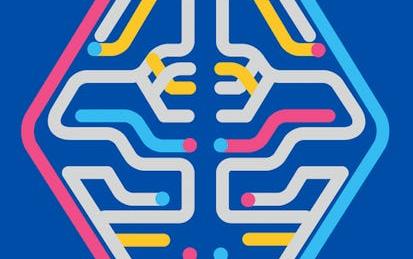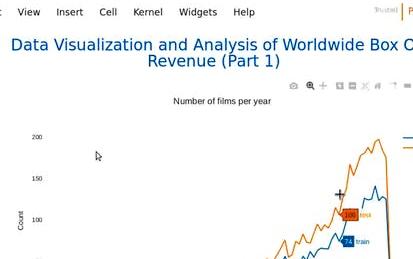

Our Courses

Interactive Geospatial Visualization:Kepler GL & Jupyter Lab
In this 1-hour long project-based course, you will learn how to easily create beautiful data visualization with Kepler inside Jupyter Notebooks and effectively design different geospatial data visualizations.
-
Course by

-
 Self Paced
Self Paced
-
 4 hours
4 hours
-
 English
English

Statistics for Data Science with Python
This Statistics for Data Science course is designed to introduce you to the basic principles of statistical methods and procedures used for data analysis. After completing this course you will have practical knowledge of crucial topics in statistics including - data gathering, summarizing data using descriptive statistics, displaying and visualizing data, examining relationships between variables, probability distributions, expected values, hypothesis testing, introduction to ANOVA (analysis of variance), regression and correlation analysis.
-
Course by

-
 Self Paced
Self Paced
-
 14 hours
14 hours
-
 English
English

Data Science Coding Challenge: Loan Default Prediction
In this coding challenge, you'll compete with other learners to achieve the highest prediction accuracy on a machine learning problem. You'll use Python and a Jupyter Notebook to work with a real-world dataset and build a prediction or classification model. Important Information: How to register? To participate, you’ll need to complete simple steps. First, click the “Start Project” button to register. Next, you’ll need to create a Coursera Skills Profile, which only takes a few minutes.
-
Course by

-
 Self Paced
Self Paced
-
 3 hours
3 hours
-
 English
English

Intro to TensorFlow em Português Brasileiro
O objetivo deste curso é aproveitar a flexibilidade e a facilidade de uso do TensorFlow 2.x e do Keras para criar, treinar e implantar modelos de machine learning. Você aprenderá sobre a hierarquia da API TensorFlow 2.x e conhecerá os principais componentes do TensorFlow nos exercícios práticos. Mostraremos como trabalhar com conjuntos de dados e colunas de atributos. Você aprenderá a projetar e criar um pipeline de entrada de dados do TensorFlow 2.x.
-
Course by

-
 Self Paced
Self Paced
-
 Portuguese
Portuguese

Aprendiendo Python con textos, números y ecuaciones
En este curso basado en un proyecto, aprenderás a crear un programa en Python para resolver ecuaciones lineales, y explorarás objetos, sentencias y funciones de Python para procesar textos y números. Al finalizar este proyecto habrás creado una aplicación que ayudará a los estudiantes y profesores a practicar con expresiones y ecuaciones lineales o de primer grado.
-
Course by

-
 Self Paced
Self Paced
-
 3 hours
3 hours
-
 Spanish
Spanish

NLP System Architecture and Dev-Ops
Este curso te brindará los conocimientos necesarios para la implementación de algoritmos de NLP. Mediante el uso de los últimos algoritmos más populares en NLP se procederá a dar solución a un conjunto de problemas propios del área. Para realizar este curso es necesario contar con conocimientos de programación de nivel básico a medio, deseablemente conocimiento básico del lenguaje Python y es recomendable conocer los Jupyter Notebooks en el entorno Anaconda. Para desarrollar aplicaciones se va a utilizar Python 3.6 o superior.
-
Course by

-
 Self Paced
Self Paced
-
 11 hours
11 hours
-
 Spanish
Spanish

Hierarchical Clustering using Euclidean Distance
By the end of this project, you will create a Python program using a jupyter interface that analyzes a group of viruses and plot a dendrogram based on similarities among them.
-
Course by

-
 Self Paced
Self Paced
-
 3 hours
3 hours
-
 English
English

Data Science Methodology
If there is a shortcut to becoming a Data Scientist, then learning to think and work like a successful Data Scientist is it. In this course, you will learn and then apply this methodology that you can use to tackle any Data Science scenario. You’ll explore two notable data science methodologies, Foundational Data Science Methodology, and the six-stage CRISP-DM data science methodology, and learn how to apply these data science methodologies.
-
Course by

-
 Self Paced
Self Paced
-
 15 hours
15 hours
-
 English
English

Select Topics in Python: Matplotlib
Code and run your first Python script with Matplotlib in minutes without installing anything! This course is designed for learners with some Python experience, and provides a crash course in Matplotlib. This enables the learners to delve into core data visualization topics that can be transferred to other languages.
-
Course by

-
 Self Paced
Self Paced
-
 7 hours
7 hours
-
 English
English

IBM Data Analyst Capstone Project
By completing this final capstone project you will apply various Data Analytics skills and techniques that you have learned as part of the previous courses in the IBM Data Analyst Professional Certificate. You will assume the role of an Associate Data Analyst who has recently joined the organization and be presented with a business challenge that requires data analysis to be performed on real-world datasets.
-
Course by

-
 Self Paced
Self Paced
-
 21 hours
21 hours
-
 English
English

Analyze Box Office Data with Seaborn and Python
Welcome to this project-based course on Analyzing Box Office Data with Seaborn and Python. In this course, you will be working with the The Movie Database (TMDB) Box Office Prediction data set. The motion picture industry is raking in more revenue than ever with its expansive growth the world over. Can we build models to accurately predict movie revenue? Could the results from these models be used to further increase revenue? We try to answer these questions by way of exploratory data analysis (EDA) in this project and the next.
-
Course by

-
 Self Paced
Self Paced
-
 3 hours
3 hours
-
 English
English

Computers, Waves, Simulations: A Practical Introduction to Numerical Methods using Python
Interested in learning how to solve partial differential equations with numerical methods and how to turn them into python codes? This course provides you with a basic introduction how to apply methods like the finite-difference method, the pseudospectral method, the linear and spectral element method to the 1D (or 2D) scalar wave equation. The mathematical derivation of the computational algorithm is accompanied by python codes embedded in Jupyter notebooks. In a unique setup you can see how the mathematical equations are transformed to a computer code and the results visualized.
-
Course by

-
 Self Paced
Self Paced
-
 35 hours
35 hours
-
 English
English

Visualizing & Communicating Results in Python with Jupyter
Code and run your first Python program in minutes without installing anything! This course is designed for learners with limited coding experience, providing a foundation for presenting data using visualization tools in Jupyter Notebook. This course helps learners describe and make inferences from data, and better communicate and present data. The modules in this course will cover a wide range of visualizations which allow you to illustrate and compare the composition of the dataset, determine the distribution of the dataset, and visualize complex data such as geographically-based data.
-
Course by

-
 Self Paced
Self Paced
-
 11 hours
11 hours
-
 English
English

Introduction to Bayesian Statistics
The objective of this course is to introduce Computational Statistics to aspiring or new data scientists. The attendees will start off by learning the basics of probability, Bayesian modeling and inference. This will be the first course in a specialization of three courses .Python and Jupyter notebooks will be used throughout this course to illustrate and perform Bayesian modeling. The course website is located at https://sjster.github.io/introduction_to_computational_statistics/docs/index.html.
-
Course by

-
 Self Paced
Self Paced
-
 13 hours
13 hours
-
 English
English

Python for Data Science, AI & Development
Kickstart your learning of Python with this beginner-friendly self-paced course taught by an expert. Python is one of the most popular languages in the programming and data science world and demand for individuals who have the ability to apply Python has never been higher. This introduction to Python course will take you from zero to programming in Python in a matter of hours—no prior programming experience necessary! You will learn about Python basics and the different data types.
-
Course by

-
 Self Paced
Self Paced
-
 27 hours
27 hours
-
 English
English

Omnibond: Creating an HPC Environment in Google Cloud with CloudyCluster
This is a self-paced lab that takes place in the Google Cloud console. In this lab, you create a complete turn-key High Performance Computing (HPC) environment in Google Cloud. This environment will provide the familiar look and feel of on-prem HPC systems but with the added elasticity and scalability of Google Cloud. In this lab you see how CloudyCluster can easily create HPC/HTC jobs that will run on-prem or in CloudyCluster on Google Cloud. You can rely on the familiar look and feel of a standard HPC environment while embracing the capabilities and elasticity of Google Cloud.
-
Course by

-
 Self Paced
Self Paced
-
 2 hours
2 hours
-
 English
English

IBM Data Analyst
Prepare for a career in the high-growth field of data analytics. In this program, you’ll learn in-demand skills like Python, Excel, and SQL to get job-ready in as little as 4 months. Data analysis is the process of collecting, storing, modeling, and analyzing data that can inform executive decision-making, and the demand for skilled data analysts has never been greater. This program will teach you the foundational data skills employers are seeking for entry-level data analytics roles.
-
Course by

-
 Self Paced
Self Paced
-
 English
English

Data Engineering and Machine Learning using Spark
NOTE: This course is currently replaced with IBM Machine Learning with Apache Spark.
Further your data engineering career with this self-paced course about machine learning with Apache Spark! Organizations need skilled, forward-thinking Big Data practitioners who can apply their business and technical skills to unstructured data such as tweets, posts, pictures, audio files, videos, sensor data, and satellite imagery and more to identify behaviors and preferences of prospects, clients, competitors, and others.
-
Course by

-
 Self Paced
Self Paced
-
 8 hours
8 hours
-
 English
English

Analyze Data in Azure ML Studio
Did you know that you can use Azure Machine Learning to help you analyze data? In this 1-hour project-based course, you will learn how to display descriptive statistics of a dataset, measure relationships between variables and visualize relationships between variables. To achieve this, we will use one example diabetes data.
-
Course by

-
 Self Paced
Self Paced
-
 3 hours
3 hours
-
 English
English

Computer Vision - Image Basics with OpenCV and Python
In this 1-hour long project-based course, you will learn how to do Computer Vision on images with OpenCV and Python using Jupyter Notebook.
-
Course by

-
 Self Paced
Self Paced
-
 2 hours
2 hours
-
 English
English

AI and Public Health
In this course, you will be introduced to the basics of artificial intelligence and machine learning and how they are applied in real-world scenarios in the AI for Good space. You will also be introduced to a framework for problem solving where AI is part of the solution. The course concludes with a case study featuring three Jupyter notebook labs where you’ll create an air quality monitoring application for the city of Bogotá, Colombia.
-
Course by

-
 Self Paced
Self Paced
-
 9 hours
9 hours
-
 English
English

Where, Why, and How of Lambda Functions in Python
In this project we are going to learn about lambda expressions and it's application in python. We are going to start with what is Lambda expression and how we can define it, comparing lambda functions with regular functions in python and at the end we will learn how to use lambda functions for data manipulation and exploration in pandas. this guided-project is completely beginner friendly. you only need to have basic knowledge of python programming and some experience coding in Jupyter notebook environment.
-
Course by

-
 2 hours
2 hours
-
 English
English

Classification Trees in Python, From Start To Finish
In this 1-hour long project-based course, you will learn how to build Classification Trees in Python, using a real world dataset that has missing data and categorical data that must be transformed with One-Hot Encoding. We then use Cost Complexity Pruning and Cross Validation to build a tree that is not overfit to the Training Dataset. This course runs on Coursera's hands-on project platform called Rhyme. On Rhyme, you do projects in a hands-on manner in your browser.
-
Course by

-
 Self Paced
Self Paced
-
 2 hours
2 hours
-
 English
English

Data Science and Analysis Tools - from Jupyter to R Markdown
This specialization is intended for people without programming experience who seek an approachable introduction to data science that uses Python and R to describe and visualize data sets. This course will equip learners with foundational knowledge of data analysis suitable for any analyst roles. In these four courses, you will cover everything from data wrangling to data visualization.
-
Course by

-
 Self Paced
Self Paced
-
 English
English

Python Project for Data Science
This mini-course is intended to for you to demonstrate foundational Python skills for working with data. This course primarily involves completing a project in which you will assume the role of a Data Scientist or a Data Analyst and be provided with a real-world data set and a real-world inspired scenario to identify patterns and trends. You will perform specific data science and data analytics tasks such as extracting data, web scraping, visualizing data and creating a dashboard.
-
Course by

-
 Self Paced
Self Paced
-
 9 hours
9 hours
-
 English
English



